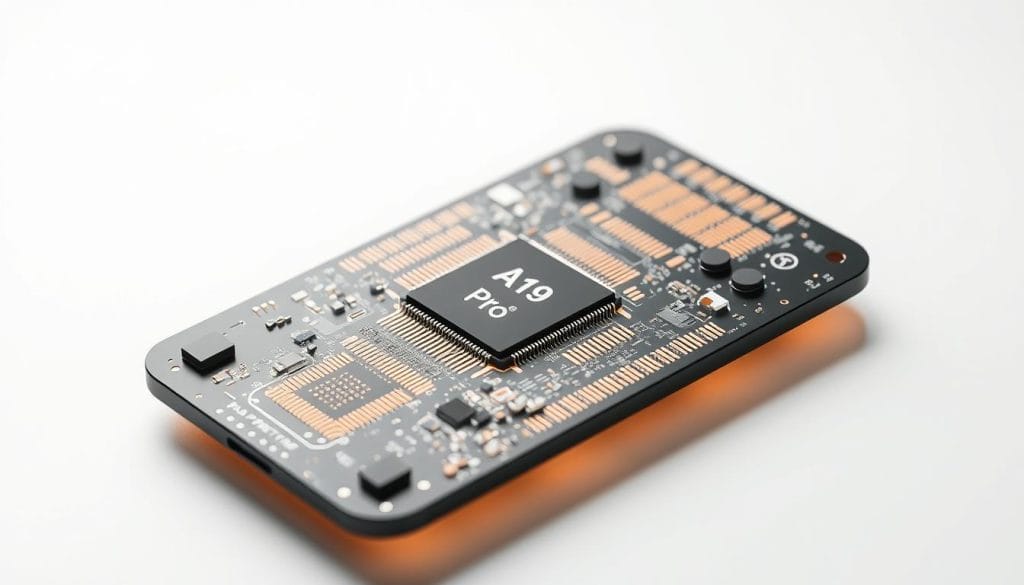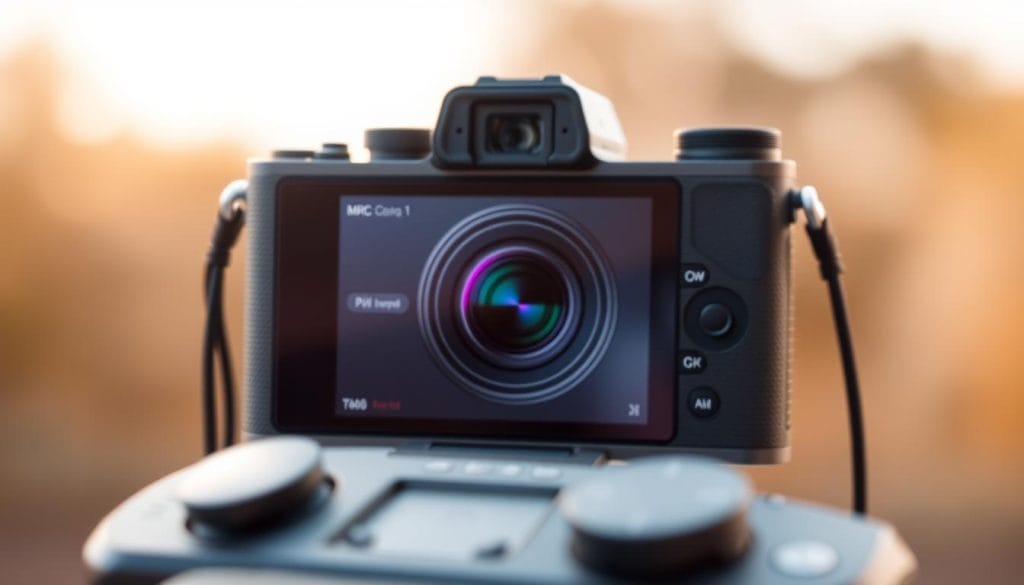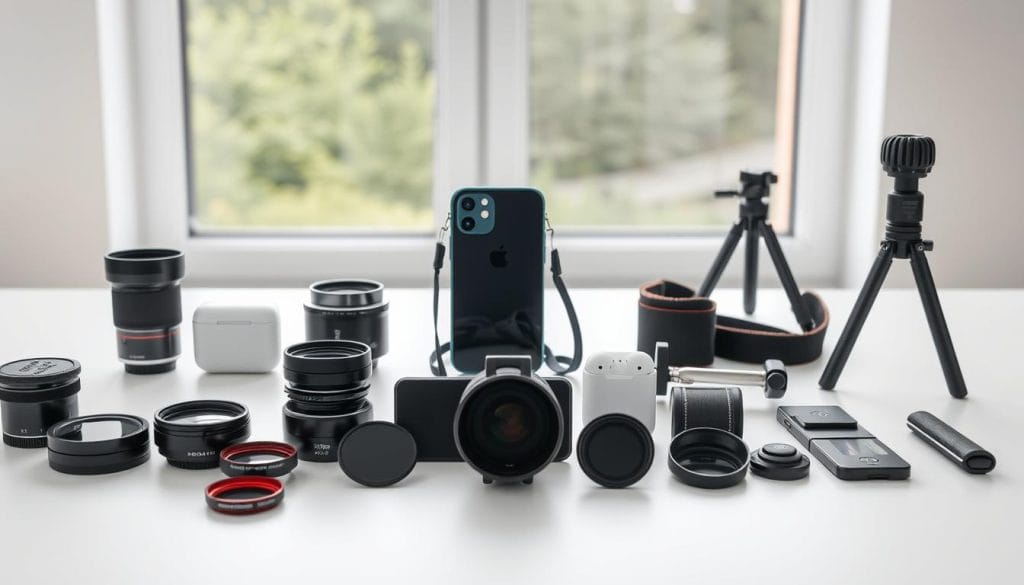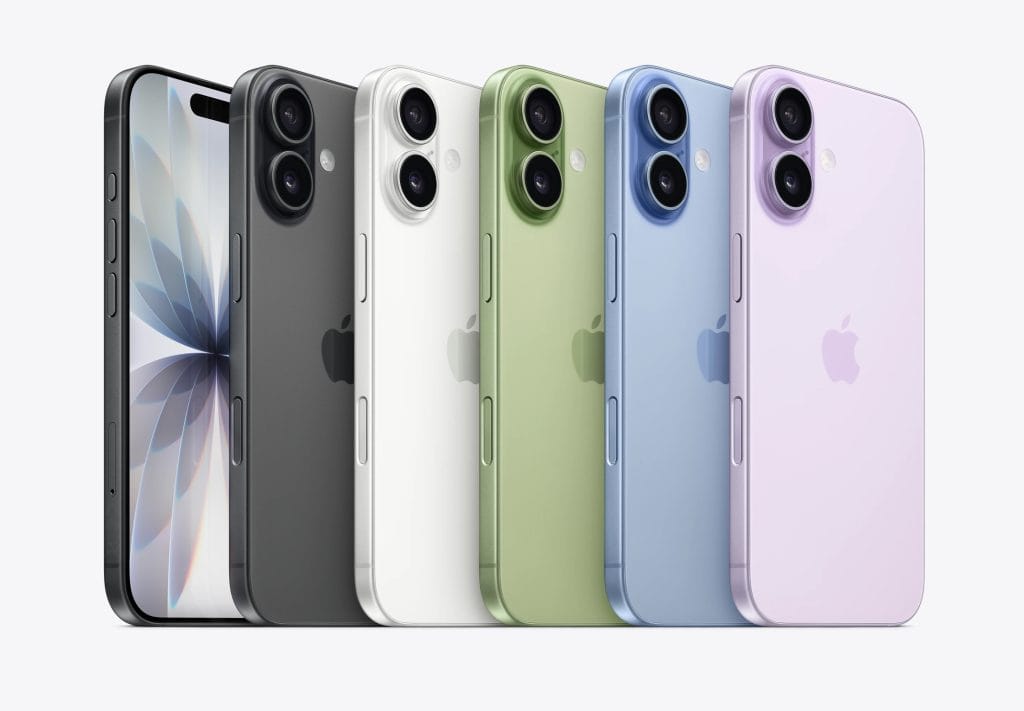I’ve spent weeks with the new handset and this iphone 17 amazing review summarises the ten changes that actually alter the way I shoot, edit and share. Brightness and a 120Hz display matter on bright British days, and the tweaks to the camera system make distant subjects feel closer than before.
The aluminium Pro models use vapour chamber cooling, which keeps performance steady when I push the device for long shoots. iOS 26’s refreshed camera UI is genuinely faster; one swipe and I’m in the mode I need.
I’ll walk you through design notes, battery behaviour and the quiet accessories that changed my workflow. By the end you’ll know which model suits your needs this year and how these features reshape day‑to‑day phone photography.
Key Takeaways
- Major camera upgrades bring reach and flexibility for everyday shoots.
- The brighter 120Hz display improves framing and playback outdoors.
- Aluminium chassis plus vapour chamber help manage thermal load.
- iOS 26 camera UI saves time with one‑swipe mode changes.
- Design and colour choices affect discretion and grip while shooting.
Why this iPhone 17 review matters right now
Right now is a pivotal time to consider an upgrade, thanks to practical shifts in the lineup. Compared with last year, Apple has pushed Pro-level display tech — 120Hz, 3,000 nits, anti-reflective coating and AOD — down to the base model. That change alone reshapes how many people view value.
The base phone now starts with 256GB at the same price point, so storage worries are less of a worry for the next year. The Pro and Pro Max move to aluminium with vapour chamber cooling, which helps heavy users and commuters avoid the overheating that frustrated me last year.
The new 4x 48MP telephoto gives optical-quality 8x at 12MP, and that changes how I use the camera day to day. Add iOS 26’s faster Camera UI and colour choices like Cosmic Orange versus Deep Blue, and the practical upgrades stack up. In short, these features make this a sensible moment to buy, not just chase specs.
- Display parity makes the everyday screen feel like a Pro screen.
- Storage and battery choices matter for how long you keep the phone.
- Zoom fidelity and thermal fixes affect real-world shooting.
Design and build: aluminium, camera plateau, and everyday usability
How a device sits in my hand matters more than any spec sheet — and this one shows that. The aluminium frame feels slightly denser and warmer in use, with softened edges that improve grip when I shoot on the move.
In-hand feel and buttons
The right-side Camera Control and the Action Button on the left make launching a favourite mode instant. Once I map the Action Button, I call up my preferred camera mode faster than any model from last year.
USB‑C 3.0 at the base speeds offloads to drives and my field accessories. The aluminium curvature helps when I frame tight verticals; the overall footprint keeps the whole setup in one hand.
Durability for UK life
Ceramic Shield 2 front and a ceramic back add toughness, and IP68 means I don’t hesitate to shoot in drizzle or near sea spray. The large, colour‑matched plateau in Cosmic Orange and Deep Blue looks premium and stabilises the device on a table.
- The move to aluminium feels more thermally competent in my hand.
- The unapologetic camera plateau improves pinch grip and on-table stability.
- Materials and layout translate to faster, safer use day to day.
Display and screen experience: brighter, smoother, more immersive
A brighter, snappier display changes how I frame shots and check files on the move. The screen now feels like a proper working tool rather than a phone toy, especially when I’m outdoors or editing on the go.
6.3-inch OLED, 120Hz ProMotion, 3,000 nits outdoors
The 6.3-inch OLED runs at 2,622 x 1,206 with 460 ppi and a variable 1–120Hz ProMotion. Peak outdoor brightness hits 3,000 nits and contrast is listed at 2,000,000:1. Anti‑reflective glass and always‑on display are now standard, which helps me line up shots without squinting.
- The jump to 3,000 nits means I can compose and check focus in harsh sun without cupping my hand.
- ProMotion dropping to 1Hz saves battery while keeping scrolling, maps and games fluid.
- Resolution and contrast make HDR clips and grading checks feel reliable for quick camera edits.
- Compared with the Pixel 10 Pro (3,300 nits), tuning here favours natural skin tones and faithful skies.
Across the year, these screen and display improvements become practical features. I use the phone more as a monitor and editor because I trust what I see.
Performance and thermals: A19 Pro power without the heat
Peak scores are nice, yet the A19 Pro’s real win is steady performance when the camera gets busy. I find the six‑core CPU, six‑core GPU with Neural Accelerators, 16‑core NPU and 12GB RAM deliver snappy responsiveness across tasks.

Benchmark reality vs real-world use
In synthetic runs the Pro sometimes edges the Pro Max by about 1% in GPU tests. That tiny gap comes from lower pixel count, not a different architecture.
What matters to me is recording, editing and exporting without throttling. In real use the phone feels smooth for browsing, RAW processing and long 4K captures.
Vapour chamber cooling and aluminium chassis benefits
The vapour chamber plus aluminium keeps temperatures steadier during long shoots. Where last year’s models rose hot in sun or weak signal, this feels calmer in my hand.
“Sustained camera use now stays close to peak performance, with fewer frame drops and less battery drain.”
- Fewer frame drops in long captures.
- On‑device processing feels instant thanks to the pro chip and NPU.
- More comfortable handling in weak signal and warm conditions.
Battery life and charging: hours gained, minutes to refill
Longer runtimes and faster top-ups change how I plan a day of shooting and streaming. In my tests the new runtime numbers matter in real life because they cut down mid‑day stops and stress.
My streaming test results vs Pro Max, iPhone Pro, and Air
On a Wi‑Fi streaming loop at max brightness I measured: iPhone Pro Max >32 hours; iPhone Pro 27h42m; the base model 24h31m; and the Air 19h15m. The Pro delivered nearly 28 hours for me, which covers a day and a half of mixed use.
Fast charging, MagSafe/Qi2, and day-to-day endurance
Wired charging now tops out at 30W and wireless at up to 25W. With Apple’s 40W variable‑rate brick the Pro reached 0–100% in 53 minutes — which saved me valuable minutes between shoots.
- Daily use rarely left me with range anxiety; camera‑heavy days still had a buffer.
- Thermal gains from the aluminium and vapour chamber also help the battery by reducing heat‑induced drain.
- Consider storage needs up front: 4K ProRes and long telephoto sessions use space quickly and add management time.
Camera system overview: triple 48MP Fusion from 13mm to 200mm
The camera array here feels like the most useful toolkit I’ve carried in a phone for everyday UK shooting.
The triple 48MP Fusion setup pairs a 48MP main camera, 48MP ultrawide and 48MP telephoto. Computational blending gives you 24MP outputs by default, which keep files sensible without losing fine detail.
Effective focal range spans roughly 13mm to 200mm, so I can switch from wide streets to distant subjects without changing kit. Macro snaps engage smoothly at close distances and automatic portrait handling isolates people with fewer taps.
The ultrawide holds detail in the corners better than I expected, which helps with environmental portraits and tight interiors. Camera Control now wakes the app faster, so I miss fewer fleeting moments.
- The main sensor provides dense detail and solid dynamic range.
- Zoom across the range feels coherent, with better colour and contrast matching.
- This pro-level system covers most features I need for a whole day’s shooting.
Telephoto transformed: 4x 48MP and optical‑quality 8x
A bigger telephoto sensor quietly altered my approach to portraits and landscape shots. The 4x telephoto now uses a 48MP sensor at roughly 100mm, replacing last year’s 5x 12MP unit, and that change shows in framing and detail.
Why 4x feels natural for portraits and landscapes
The 100mm field of view gives a classic portrait compression without forcing me to stand too far back. For landscape frames it avoids the slightly tight look I had in previous years.
Colour, contrast and background separation all improved. I find myself using the telephoto for subjects I would once reach for a short lens.
When I reach for 8x and what the files look like
When distant subjects need isolating I switch to 8x. The phone delivers optical‑quality 12MP crops and the live preview helps me lock on fast. That live view saves time when panning ridgelines or city skylines.
I compared long-range zoom shots to work from an iPhone Pro and an iPhone Pro Max and the coherence between focal lengths makes sequencing easier.
Print-worthiness and fine detail in real scenes
Field tests in the Dolomites showed files that hold up to big prints. 100% crops keep texture and microcontrast, so these photos can sit in galleries or on magazine pages.
- The 4x 48MP hits the 100mm look I prefer for portrait sessions.
- Good light yields 4x files fit for sizeable prints with strong detail.
- I use 8x for long-range work; the zoom output is the best I’ve seen from a phone camera.
Photographic Styles and the new Bright look
Photographic Styles now shape more of my shots before I even open an editor. They split into two smart groups: Undertones for people and Moods for broader scenes. That split helps me pick a path quickly when the light changes.
Undertones subtly prioritise skin and tone. I use Undertones as my go‑to for portraits because they keep faces natural while lifting contrast. The new Undertone Bright brightens faces, enhances foliage and protects sky highlights without flattening the scene.
Moods let me push creative colour and texture for landscapes or architecture. On overcast UK days Bright adds pop to jackets and leaves but keeps a believable balance. Because the sensor and processing are smarter, I reach for Styles more and ProRAW less this year unless heavy grading is planned.
“Bright lifts faces without bleaching skies, giving me usable photos straight out of camera.”
- I set Undertone Bright for people near windows and switch to a moodier Style for venue details.
- Styles keep me shooting in the moment and reduce time in the editor.
- They are one of the small features that changed how I work this year.
Simply better selfies: Center Stage front camera in the real world
Center Stage makes the front camera far more useful for everyday shooting. I noticed it first on short walks and during group clips, where framing used to be a constant fuss.
Square sensor magic: auto portrait and landscape without thinking
The front unit is an 18MP, square 1:1 sensor that flips output to portrait or landscape automatically. It detects faces and adapts framing on the fly, so I can hold the phone how I like and still get the right crop.
- The square sensor lets me stop overthinking orientation and keeps composition steady as friends step in.
- Center Stage excels on the move — walking, cycling or on the Tube — and it caught multiple subjects hands-free in my tests.
- Skin tones match the rear cameras well, so intercutting front and main photos or clips looks seamless.
- Portrait effects from the front camera are cleaner now, and backlit scenes produced more usable selfies.
- Lower friction means I press record more often and get fewer wasted takes for quick creator content.
New Camera UI in iOS 26: speed, simplicity, and control
The camera app in iOS 26 feels like someone finally tidied the control room. The interface now favours quick gestures and a decluttered view, which helps me capture more in less time.

One-swipe modes, Night mode choices, and on-glass settings
Swiping from Photo to Pano is a single, smooth motion. That one-swipe mode change saves real seconds when something unexpected appears and I must react fast.
Night mode is simplified to Off, Auto and Max. Max runs about 10s handheld or 30s on a tripod, so I tap once and trust the shot to get cleaner detail.
Tapping the glossy mode selector opens an on‑glass settings drawer. I change aspect ratio, exposure and Styles without leaving the viewfinder. It keeps my thumb in place and speeds up adjustments.
Indicators off: decluttering for faster shooting
You can hide Flash and Live Photo icons via Settings > Camera > Indicators. Fewer on-screen elements mean a clearer display for composition and fewer missed shots.
- The shorter flow makes event and street work snappier.
- Less UI means more focus on the frame and the shot.
- Camera Control responsiveness gets me from pocket to picture faster than any year before.
Pro video chops: 4K ProRes Log at up to 120FPS
The move to 4K ProRes Log at 120fps turns handheld clips into usable cinema takes for me. Motion looks smoother and grading room options expand when I shoot with this setting.
Action, Cinematic, ACES, Apple Log 2 and pro workflows
I now use ACES and Apple Log 2 to match colour pipelines across kit. That makes this phone a realistic B‑cam on mixed shoots and helps me keep continuity in multifaceted edits.
Frame grabs that pass as photos
Frame grabs from 120fps Log footage can look like standalone photos. In bright light the 120fps clips act as a super‑fast burst, so decisive shots — sport, wildlife, city life — land in-camera.
- 4K ProRes Log at 120fps: motion is cinematic and frame grabs can pass for stills.
- ACES and Apple Log 2 let me match colour with cinema cameras for pro workflows.
- Genlock support eases multi‑camera sync on complex shoots.
- Action and Cinematic modes are steadier and intercut well with standard ProRes.
- Smoother zoom transitions keep colour consistent when I punch in during clips.
Accessories and quiet upgrades: strap, AirPods trigger, lens hints
Small kit tweaks often make the biggest difference when I’m shooting on the move. I’ve helped the phone behave more like a camera with a few low-key accessories and software prompts.
Crossbody camera strap: when it helps and when it doesn’t
The crossbody strap has a smooth texture and a useful magnetic slack that keeps the phone secure during active shoots. It feels like a slicker Peak Design Slide Lite and is great for situations where security matters — think paragliding or urban walks.
That said, attaching and detaching takes time, and the thin tether raises durability questions for heavy daily use. I often use it when the phone acts as a second camera; otherwise, I keep the phone in my pocket.

AirPods Pro remote shutter and Lens Cleaning Hints
Using AirPods as a remote shutter is a handy trick for tripod shots and group photos. Pressing an AirPod triggers a three‑second countdown; you must wear one in-ear, and the timer plus blinking light can spoil stealthy shots.
Lens Cleaning Hints (Settings > Camera) feel trivial until they save a day of ruined images. That quick prompt nudges me to wipe a smudge before focus and flare wreck a series of shots.
“These quiet upgrades don’t headline a launch, but they change how often I capture the moments I care about.”
- The strap gives security on the move but is slow to swap for quick jobs.
- AirPods remote is useful for tripod and group work despite the forced timer.
- Lens prompts save time and rescue focus issues before they cost a shoot.
If you favour the iphone air as a minimal camera, I recommend Halide for added close focus, a strong 3x option and RAW support — handy trade-offs for slim, futuristic tech.
Colours and discretion: Cosmic Orange vs Deep Blue for photographers
Subtle finishes save me from unwanted reflections and curious glances during shoots.
I adore the Cosmic Orange finish as an object: it has character and lifts a setup. But when I’m working with people and trying to vanish into the background, that colour draws attention like high‑vis clothing.
Deep Blue, especially with a dark case, keeps the kit discreet. Darker surfaces reduce reflections in windows and on stage wings, so fewer onlookers notice my camera or phone when I shoot through glass or from the back of a venue.
- I adore Cosmic Orange as an object, but for low profile work I pick Deep Blue with a dark case.
- Darker finishes cut reflections, which helps when composing near cars or shopfronts.
- If personality matters more than subtlety, cosmic orange makes a strong statement.
“If your priority is personality, Cosmic Orange is gorgeous; if it’s subtlety, pick Deep Blue.”
iphone 17 amazing review: which model fits you in the UK?
For UK photographers the choice is less about raw numbers and more about hand feel, usable zoom and how much storage you actually need.
iPhone 17 value: Pro-level screen, upgraded cameras, bigger base storage
The base model finally brings a Pro-level display — a 6.3″ OLED at 120Hz with 3,000 nits — and it starts at 256GB storage, which matters if you shoot lots of video or hold onto photos for months.
That larger storage bundle makes the new phone a better value than many rivals, and the dual 48MP main camera setup gives real improvements over last year.
Pro vs Pro Max: same cameras, size and battery trade-offs
The iphone pro and pro max share the triple 48MP Fusion cameras and the A19 Pro. Choose the pro for easier one‑hand use and the pro max if you want extra battery life and up to 2TB storage for heavy video work.
The difference is mostly endurance and hand feel — the zoom and image quality are identical between the two.
iPhone Air: thin, light, futuristic—what you give up
The iphone air is gloriously thin and pleasant to carry, but its cameras and battery life trail the Pro models. If you favour minimal weight and occasional snaps it is a joy.
Install Halide if you need a stronger 3x and RAW flexibility; it closes some gaps for close work.
How it stacks against Samsung Galaxy S25 and Pixel 10
Against the samsung galaxy s25 and Pixel 10 lines, Apple’s bigger base storage and Pro-level screen at the entry price tip value in its favour, especially if you plan to keep your phone for years.
- Start with the base model for most people: display parity, extra storage and solid cameras.
- Step up to iphone pro for telephoto reach and better endurance.
- Go pro max only if battery life and storage are your top priorities, or you shoot a lot of video.
“My rule: choose the model that suits how you shoot today, not the one you might need in five years.”
Conclusion
The upgrades this year nudge the phone from a gadget to a dependable workhorse.
Standout wins — the 4x 48MP telephoto with optical‑quality 8x, the 3,000‑nit display and improved thermals — changed how I shoot and edit in real life.
The new camera UI and 4K ProRes Log at 120fps mean I capture better video and frame grabs that pass as photos. Faster charging and steadier battery under load keep me shooting for longer.
Choose the base model for best value. Pick iphone pro for the pro zoom, endurance and storage, and a Pro Max if battery life rules your workflow.
In short, these practical features make the phone a tool I reach for all the time, not just for specs on a sheet.


great site. hope to see more
Greatest light weight camera ever. Features only usually seen on top end SRLs